If you share your home with an itchy Dachshund, then you know how uncomfortable and frustrating skin problems can be for your dog.
While any dog can suffer from skin problems, Dachshunds are prone to developing a wide variety of skin-related issues ranging from allergies to color dilution alopecia.
Skin issues are one of the top health issues for Dachshunds.
Luckily, many of the most common Dachshund skin problems can be treated, managed effectively, or prevented from developing at all.
But, to prevent or treat your dog’s skin problems, you must identify the cause.
This means learning a little more about the most common conditions experienced by the breed and how to reduce the possible triggers in your home.
Symptoms Your Dachshund has Skin Problems
With a wide range of different skin conditions and complications, there are many signs that something may be wrong with your dog.
This includes subtle signs that they are feeling “off” or uncomfortable to more serious concerns that require a call to your veterinarian.
Signs and symptoms associated with the most common Dachshund skin problems include:
- Excessive itching and scratching
- Feeling easily irritated or agitated
- Trouble getting comfortable
- Dry skin
- Rashes
- Red bumps
- Sores or Skin Lesions
- Dandruff
- Hair loss (either local or widespread)
It is normal for your Dachshund to scratch occasionally. Just like we will occasionally experience an itch, they do too.
But, if you notice that your Dachshund’s itchy skin doesn’t seem to go away, or if you notice ongoing itching combined with any of the other symptoms, then it’s time to look a little closer.
Why is My Dachshund Losing Hair?
One symptom that often triggers a feeling of panic or concern is the discovery that your dog is losing hair.
Especially if it comes on quickly with no other sign of problems.
The good news is that minor hair loss in Dachshunds isn’t uncommon. In many cases, it is the result of your dog obsessively scratching at one spot.
This means that the solution to your Dachshund’s hair loss is to give them relief from whatever is making them itchy.
Put on a device such as a cone to prevent your dog from itching more.
For a short-term solution, try distracting your dog to keep them from itching that area. You can also use a medical cone or a sweater to prevent them from being able to scratch that specific spot.
Another common cause of a Dachshund losing hair, and developing bald spots, is something called color dilution alopecia.
Alopecia is just a fancy word for pattern baldness.
Color dilution is related to your Dachshund’s color and genetics. Dahchsunds that are not black or brown are a “dilute” version of black or brown.
Examples of Dahcshund colors susceptible to color dilution alopecia are isabella (dilute of chocolate brown) and blue (dilute of black).
Causes of Dachshund Skin Issues
Environmental Allergies/Seasonal Allergies
With their short bodies, Dachshunds are closer to the ground than many other dog breeds. This means that they are closer to many of the potential allergens that exist outdoors.
Allergens that could be lurking in your home or yard include pollen, trees, grass, mold spores, dust and dust mites, or specific plants.
Most environmental allergies are seasonal, meaning that they will only experience the allergy during a specific time of the year.
There are some allergens that are present all year, but they aren’t as common.
Food Allergies
Another type of allergy that could cause skin problems are food-related allergies or intolerances.
These are less common in Dachshunds than environmental allergies, but they are still a possibility.
Your dog could potentially be allergic to any number of foods, but the most common allergies are chicken, beef, eggs, and dairy.
Although, your dog could also be allergic to wheat, grains, or even vegetables in some cases.
Ticks and Fleas
One of the most common causes of Dachshund skin problems is the presence of ticks and fleas.
These unwanted guests settle on your dog’s body, biting them and causing discomfort.
Always check for ticks so they’re not at risk for catching diseases.
They can also carry and transmit several diseases and illnesses.
Mange (Scabies)
Mange is caused by the presence of mites on your dog’s fur and skin.
They can cause serious itching and skin irritation, hair loss, or small red spots that look like insect bites.
Poor Nutrition
Your dog’s diet is a powerful thing, with the ability to improve their health. On the other hand, poor nutrition or nutritional deficiencies can have a negative impact.
Without the necessary proteins and vitamins, your Dachshund may experience dry skin and dry, brittle fur.
This can happen due to poor quality foods or if your dog hasn’t been eating properly due to another health problem.
Irritation from Grooming Products
Some shampoos are made from harsh chemicals that can irritate your Dachshund’s skin.
This is even more common in dogs that suffer from sensitive skin.
Your dog may also experience irritation from brushes or combs with sharp pins or those that have broken in any way. Rough surfaces can scratch your dog’s skin either causing skin problems or making an existing problem worse.
Genetics
Your Dachshund’s allergies or dry skin may be a gift from their parents, passed down from generation to generation. This doesn’t mean that you are helpless to do anything about it.
Collect as much information as you can about your dog’s parents including any medical conditions that they may have experienced or continue to experience.
This will help you prepare for the risk of the same condition in your dog.
Be aware of any genetic issues that you’ll need to reduce triggers for.
You can also make a conscious effort to reduce any triggers that could contribute to these conditions surfacing or getting worse.
Other Irritants
There are some outside conditions that can irritate your dog’s skin, leading to skin problems.
These include exposure to the sun (sunburns), swimming in water that contains bacteria, algae, or parasites, or exposure to chemicals.
Even your choice of laundry detergent could trigger a skin problem if it irritates your dog after washing their bed.
How to Prevent Common Skin Conditions in Dachshunds
Many of the common Dachshund skin problems that you may encounter can be prevented with a little preparation.
Reduce the risk of unwanted visitors by using regular flea and tick prevention. These products work either by repelling the bugs or by killing those that do bite your dog.
They are especially important for those that are spending time outdoors camping or hiking.
Your choice of food can have a significant impact on your Dachshund’s skin and coat health.
Commit to feeding a high-quality, nutrient-rich diet.
If you do suspect food allergies, switch to a limited ingredient diet with a single protein source.
Slowly introduce foods into your dog’s diet until you can identify the culprit.
Finally, when choosing products that your dog will have contact with in any way, try to stick to all-natural options.
This includes products like dog shampoos, laundry detergents, and household cleaners.
Perform regular skin and body scans, looking for any signs of concern.
If you notice anything, address it quickly and don’t put it off. These conditions are far easier to treat in the early stages.
This will allow you to give your dog relief from discomfort as soon as possible.
6 Common Dachshund Skin Problems
Dry, Itchy Skin
If your Dachshund has dry skin, the first thing that needs to be done is to identify the cause.
This could be as easy to see as a sunburn or a more complicated disorder like Seborrhea.
Treatment could include medications, topical treatments, or medicated shampoos.
A common sign of dry skin is if your Dachshund has dandruff.
Other signs include hair loss, crusty patches of skin, redness, or extreme itching.
Hot Spots (Acute Moist Dermatitis)
If your dog’s skin is irritated or inflamed, it can create the perfect breeding ground for bacteria. This results in a painful lesion that is generally hot to the touch.
They can be caused by flea or tick bites or any type of localized skin irritation.
These wet, oozing spots are itchy and painful.
The more that your dog bites, licks, or itches the skin, the worse the hot spot becomes.
Be aware of any genetic issues that you’ll need to reduce triggers for.
The fur around the hot spots can trap moisture around the hot spot, contributing to the problem.
Clipping the fur and exposing the spot and keeping it clean is necessary for it to clear up and heal.
Your dog may also need steroids or antibiotics.
Color-Dilution Alopecia
Characterized by thinning hair or patches of baldness, color dilution alopecia in dogs is a genetic condition.
It is mostly seen in Dachshunds with diluted colors like blue and isabella. The gene that dilutes the base color can cause a dog to start losing hair.
Hair loss caused by this condition is seen mainly on the body and ears. In some cases, it may also be seen on the legs, tail, or face.
Color-dilution alopecia in Dachshunds can’t be prevented. But, if it’s left untreated, it can lead to secondary skin infections requiring antibiotics.
Pinnal Alopecia
Another condition that causes hair loss, pinnal alopecia refers specifically to baldness on your dog’s ears.
There is very little known about pinnal alopecia, including what causes it or how to prevent it.
The good news is that there is no itching or irritation, it’s strictly cosmetic.
Sometimes, rubbing coconut oil on the end of your Dachshund’s ears to moisturize the skin can help.
Yeast Infection
Yeast infections are most common in the ears, but they can be seen anywhere on your Dachshund’s body.
This is a secondary problem, meaning that it only occurs because of another skin issue.
Identifying this root cause is necessary to clear everything up.
Some problems that can lead to a yeast infection include environmental or food-related Dachshund skin allergies, hormonal imbalances, reactions to diabetes, or trapped water in the ear canal or folds of the skin.
Symptoms of a yeast infection include unpleasant smells, rashes, thickening of the skin, or excess itching.
Bacterial Folliculitis
This skin infection occurs in the hair follicles, causing itchy bumps or scabs on your dog’s skin.
You may not be able to see this skin problem on all Dachshunds depending on how long their coat is.
While these can be seen easily on a Dachshund with a short coat, it can be harder to spot the problem with wire-haired or long-haired dogs.
To treat the bacterial infection, your dog will require medical treatment. This could include oral antibiotics, antibacterial shampoos, or topical ointments.
When Do My Dachshund’s Skin Problems Require a Veterinarian?
Some conditions can be addressed at home if your dog’s skin conditions can be described as mild discomfort or irritation.
Remove the source of irritation if you can identify it.
If your dog’s irritated skin isn’t getting better, or if it’s getting worse, it’s time to seek professional help.
Your veterinarian may be able to offer medications that will provide immediate relief while they work to address the root cause of the problem.
This is especially important if you notice any open wounds or abrasions that could get infected.
Any sign of lumps and bumps on your dog is worth discussing with your veterinarian.
While they may be nothing more than a small fatty lump, they could be a growing tumor.
The earlier you find the cause of your Dachshund’s skin problems, the faster you can address any serious problems and give your dog relief.
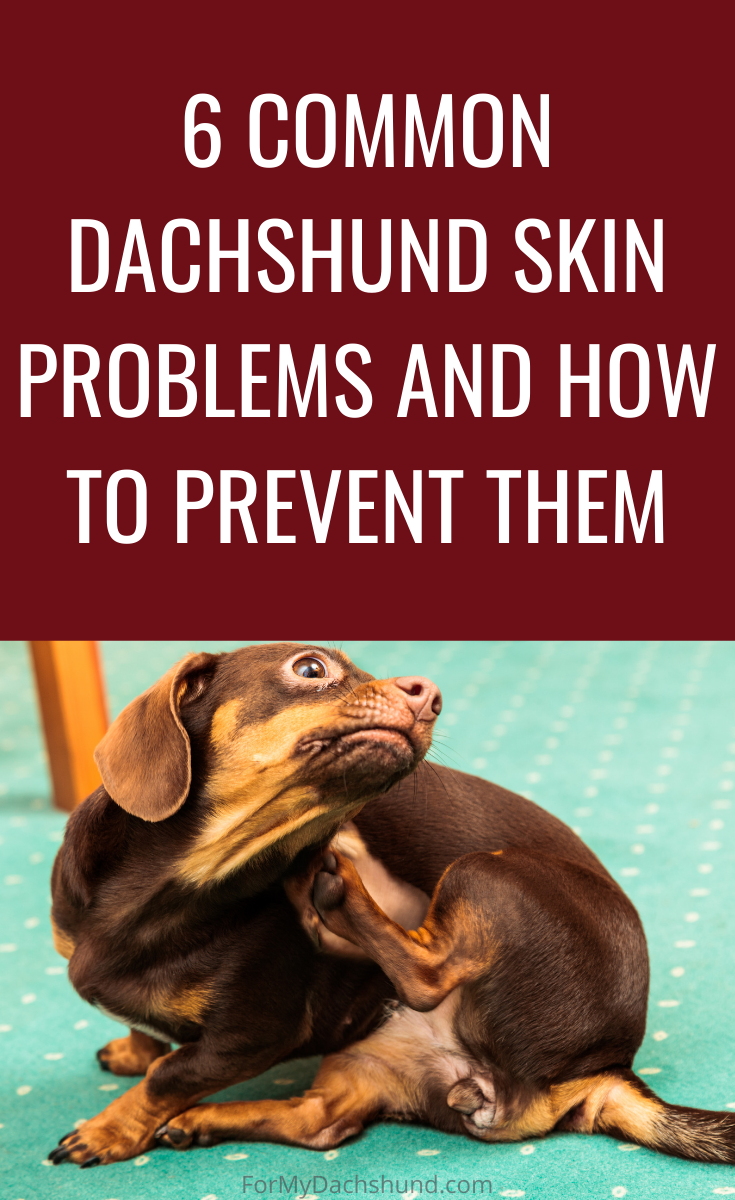
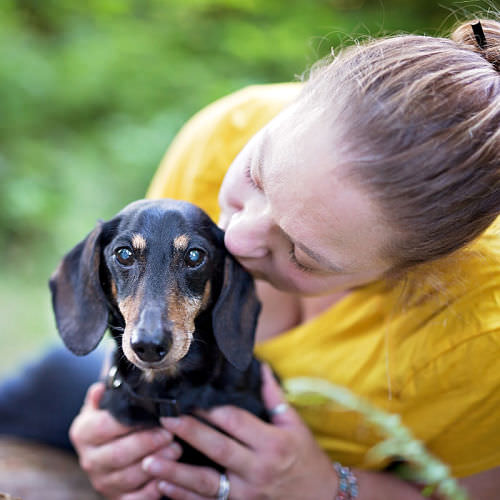
About the Author: Through her 17 years of owning and caring for Dachshunds, and almost 10 years researching and writing about them, JW has become a respected expert in the Dachshund community. Read more about her here.

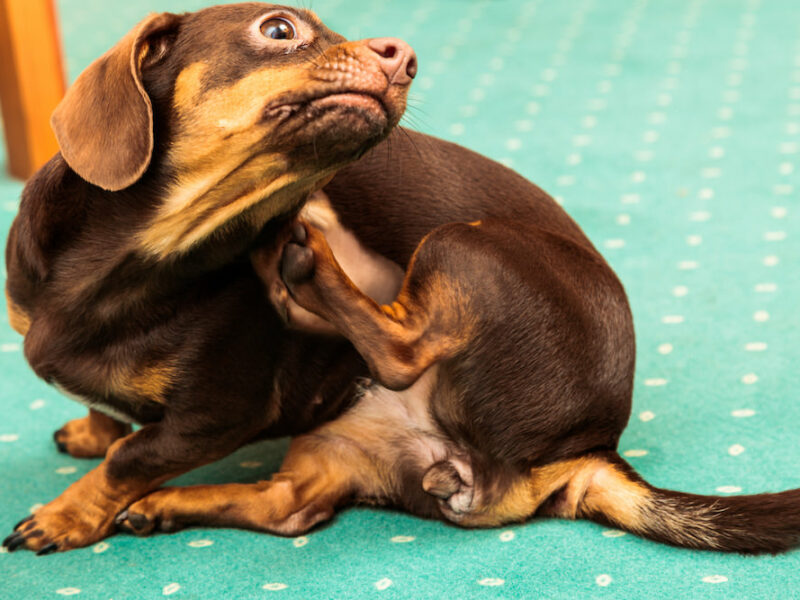
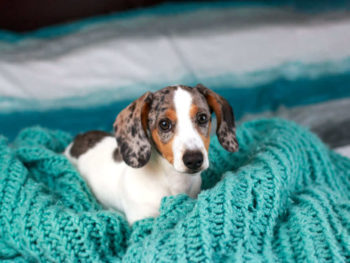
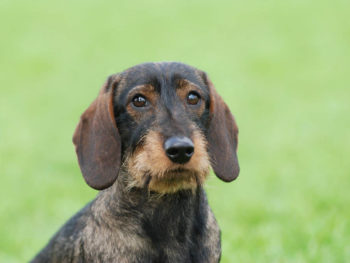
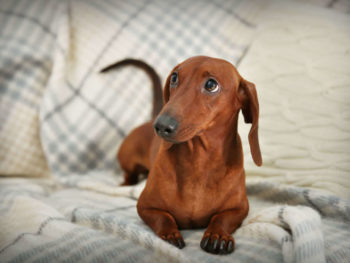
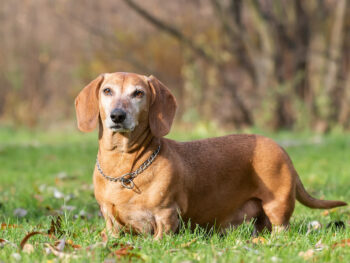
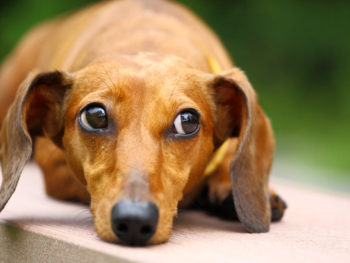

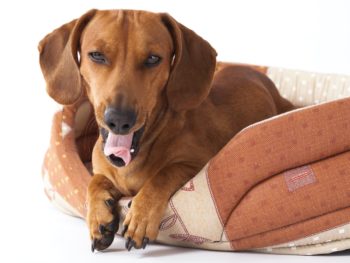
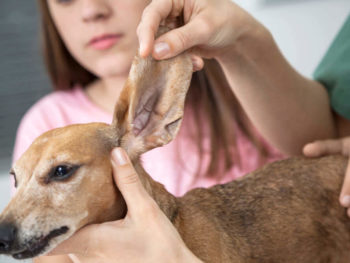
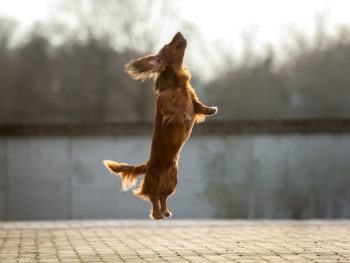
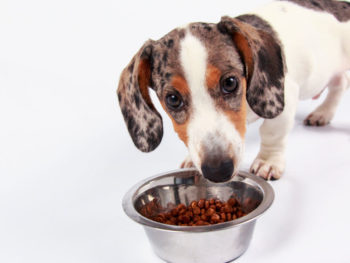
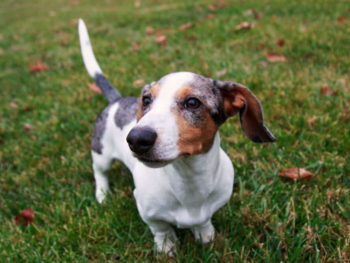
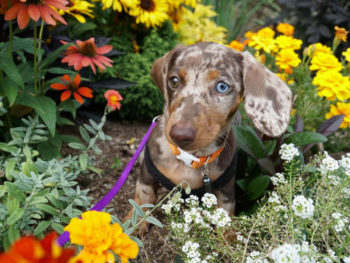
 How to Stop a Male Dachshund from Peeing on Everything
How to Stop a Male Dachshund from Peeing on Everything
